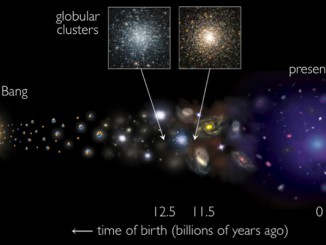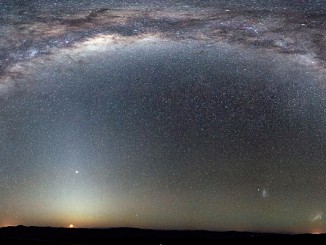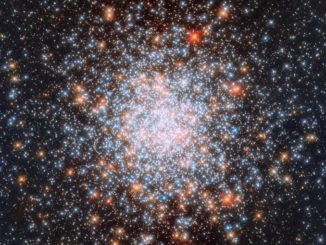Messier 22, also known as NGC 6656, is one of the most glorious globular clusters in the northern sky, a huge starswarm 10,000 light years away that can be seen with the naked eye under dark sky conditions. Discovered by the German amateur astronomer Abraham Ihle in 1665, the cluster was added to Charles Messier’s catalog 99 years later in 1764. Packed with some of the oldest stars in the known universe, M22 hosts at least two stellar mass black holes (discovered by the Very Large Array) and six free-flying planet-size bodies (discovered by the Hubble Space Telescope) that are not orbiting stars. It also is one of just four globular clusters known to host a planetary nebula (discovered by the IRAS spacecraft). This infrared and visible light image, captured by the Hubble Space Telescope, shows the crowded heart of M22 where thousands of suns glitter like diamonds on back velvet. Click on the image below for a zoomed-in view.




